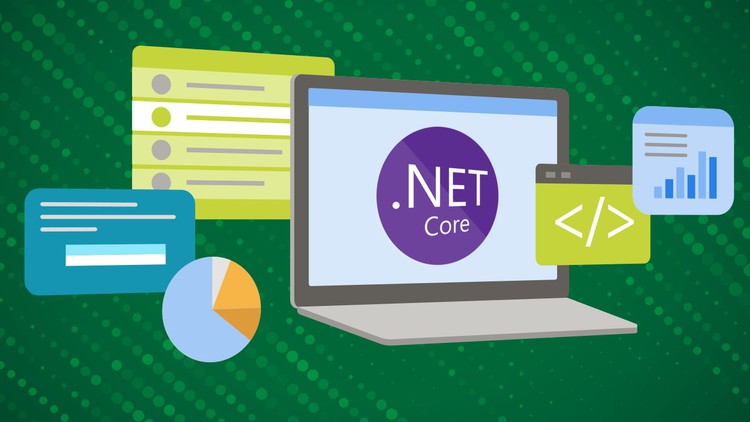Description
Introduction:
This course focuses on integrating .NET applications with SQL databases to create robust, data-driven applications. It covers the essentials of using SQL Server (or any relational database) with .NET, from creating database schemas to writing efficient queries and managing data in applications. Participants will learn how to use Entity Framework Core for object-relational mapping (ORM), execute raw SQL queries, and optimize database performance. By the end of this course, developers will have the knowledge to build scalable, secure, and performant data-driven applications with .NET and SQL.
Prerequisites:
- Proficiency in C# and object-oriented programming.
- Basic understanding of relational databases and SQL.
- Familiarity with web development concepts (optional).
- Basic knowledge of .NET Core or ASP.NET Core (helpful but not mandatory).
Table of Contents
- Introduction to .NET and SQL Integration
1.1 Understanding Relational Databases and SQL
1.2 Overview of .NET Framework and .NET Core
1.3 The Role of SQL in Data-Driven Applications
1.4 Key Concepts in SQL Server: Tables, Indexes, and Relationships
1.5 Using SQL Server with .NET Applications - Setting Up Your Development Environment
2.1 Installing and Configuring SQL Server
2.2 Setting Up Visual Studio for SQL Server Integration
2.3 Connecting .NET Applications to SQL Server
2.4 Introduction to SQL Server Management Studio (SSMS)
2.5 Using SQL Server LocalDB for Development - Entity Framework Core: ORM for .NET
3.1 Introduction to Entity Framework Core
3.2 Creating a Data Model with Entity Framework
3.3 Configuring Entity Framework with SQL Server
3.4 Performing CRUD Operations with EF Core
3.5 Using LINQ to Query Databases
3.6 Handling Relationships: One-to-Many, Many-to-Many
3.7 Data Migrations and Schema Management - Working with SQL Queries in .NET
4.1 Writing SQL Queries in .NET Applications
4.2 Executing Raw SQL Queries with ADO.NET
4.3 Parameterized Queries to Prevent SQL Injection
4.4 Using Stored Procedures in .NET
4.5 Handling Query Results and Data Mapping
4.6 Batch Processing and Bulk Data Operations - Database Transactions and Concurrency
5.1 Understanding Database Transactions
5.2 Managing Transactions in .NET
5.3 Handling Concurrency and Optimistic Locking
5.4 Using Transactions with Entity Framework
5.5 Rollback and Commit Strategies
5.6 Ensuring Data Integrity and ACID Principles - Optimizing Database Performance
6.1 Indexing and Query Optimization Techniques
6.2 Analyzing Execution Plans for SQL Queries
6.3 Caching and Performance Tuning in .NET
6.4 Using Asynchronous Programming for Database Access
6.5 Batch Inserts and Updates for Efficiency
6.6 Best Practices for Large-Scale Data Operations(Ref: AI for Big Data: Leveraging AI Techniques for Large-Scale Data) - Security and Data Protection
7.1 Implementing Authentication and Authorization in .NET
7.2 Protecting Sensitive Data with Encryption
7.3 SQL Injection Prevention Techniques
7.4 Using Parameterized Queries and ORM Security
7.5 Secure Access to SQL Server Databases
7.6 Implementing Role-Based Access Control (RBAC) in SQL - Working with Advanced SQL Features
8.1 Common Table Expressions (CTEs) and Window Functions
8.2 Full-Text Search in SQL Server
8.3 Triggers and Views for Data Management
8.4 Using SQL Server Functions and Procedures in .NET
8.5 Advanced JOINs and Subqueries in Complex Queries - Reporting and Data Visualization
9.1 Generating Reports with SQL Server Reporting Services (SSRS)
9.2 Using LINQ to Generate Dynamic Reports in .NET
9.3 Integrating SQL Data with Front-End Frameworks (Angular, React)
9.4 Building Dashboards and Data Visualizations
9.5 Exporting Data to Excel, CSV, and PDF Formats - Deploying and Managing SQL Server with .NET Applications
10.1 Deploying .NET Applications with Integrated SQL Databases
10.2 SQL Server Management and Backup Strategies
10.3 Handling Database Migrations and Upgrades
10.4 Implementing Continuous Integration and Continuous Deployment (CI/CD)
10.5 Scaling Databases and Applications for Production Environments - Troubleshooting and Debugging SQL and .NET
11.1 Debugging SQL Queries and Performance Issues
11.2 Analyzing Database Logs and Error Handling
11.3 Handling Connection Timeouts and Query Failures
11.4 Monitoring Database Performance with SQL Server Profiler
11.5 Common SQL and ADO.NET Errors and Fixes - Advanced Topics in .NET and SQL
12.1 Implementing Microservices with SQL Databases in .NET
12.2 Data Warehousing and ETL Processes with .NET
12.3 NoSQL and SQL Integration in .NET Applications
12.4 Using Azure SQL Database with .NET Core Applications
12.5 Implementing Distributed Transactions in .NET and SQL
Conclusion:
The course equips developers with the necessary skills to build sophisticated, data-driven applications using SQL Server and .NET technologies. Participants will learn to manage data effectively, integrate SQL queries into .NET applications, optimize performance, and ensure security and scalability. By mastering .Net and Sql Server for Data Driven Solutions both the back-end data management and the application development side, developers will be able to create efficient, maintainable, and secure enterprise-grade solutions.







Reviews
There are no reviews yet.